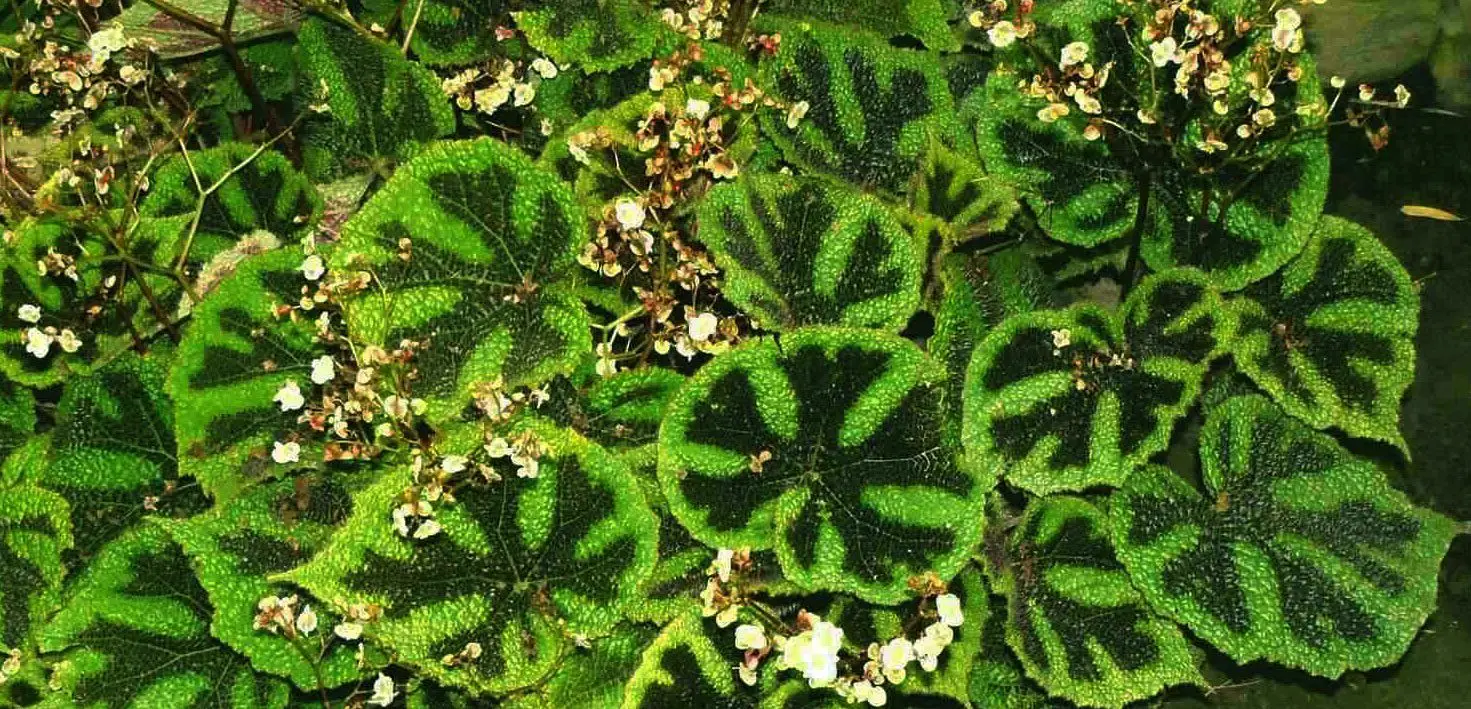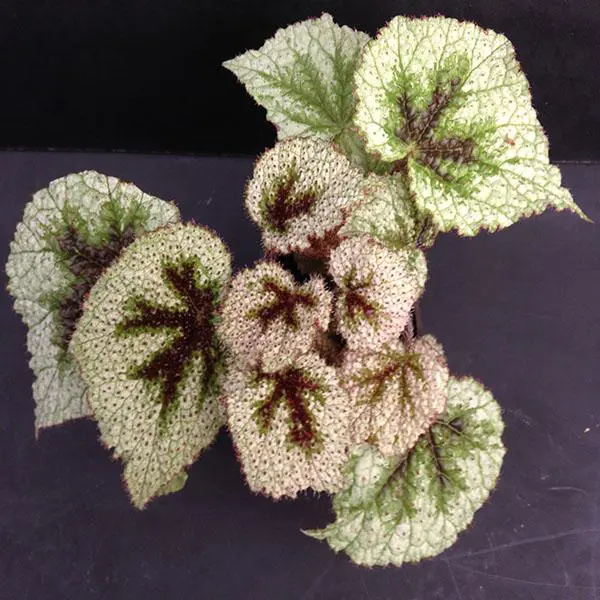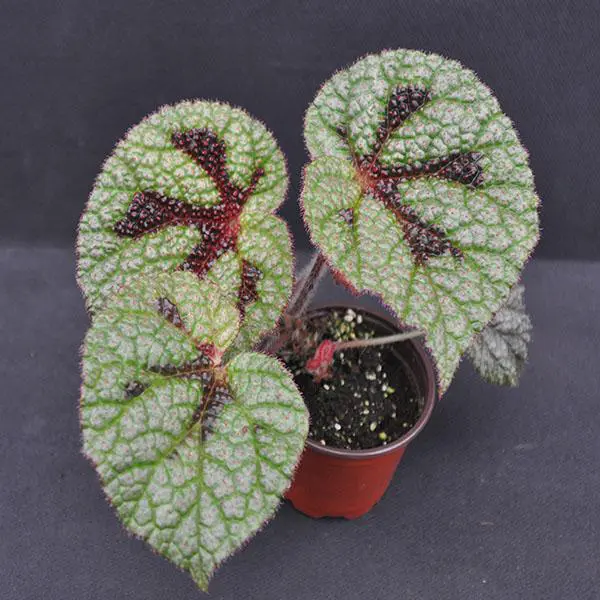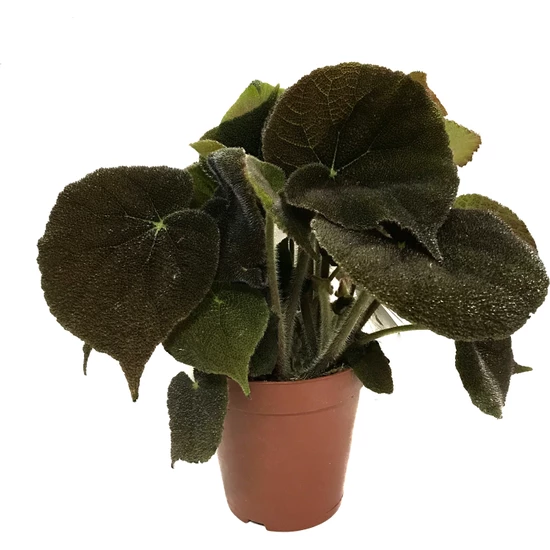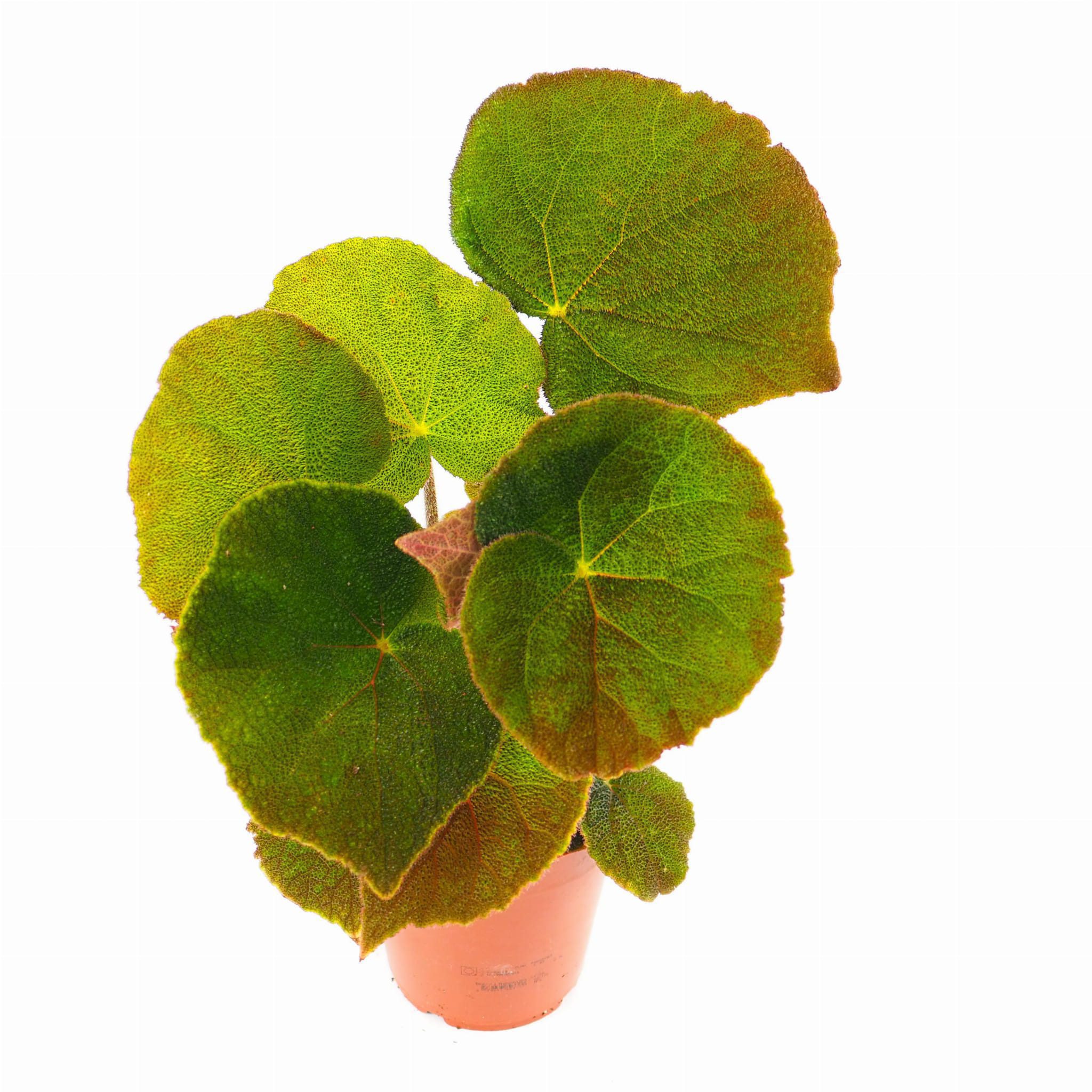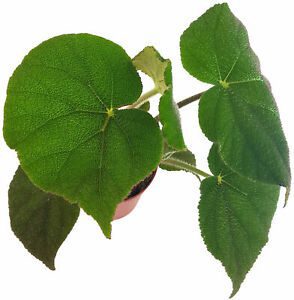Begonia masoniana was brought to England from Singapore in 1952, though its country of origin may be either China or India. L. Maurice Mason, who imported it, called it “Iron Cross” because of the distinctive shape of the markings on the apple green leaves. He was not certain if it were species or hybrid at the time. That determination was left to Edgar Irmscher who published the official description in 1959 and named the species for Mason.
The surface texture of the leaves is puckered and coarse. It is made up of pustules with a red hair growing from the tip of each minute pimple. The leaf margins are serrated and hairy. The chocolate brown markings develop around the veins of the young leaves and darken with age.
This is a plant best left to the more experienced growers. In most localities it prefers to be grown indoors. Fluorescent lighting is excellent since it can be maintained at a high level consistently. If placed in a terrarium sufficient space must be allowed for spread and height, which may well be half a yard. Though it does not require as high humidity as most of the pustulated begonias, it seems to be finicky in this respect. Outdoors it should have protection from wind, direct sun, drying conditions and of course, frost.
It is usually propagated from leaf cuttings, since it sets seed with difficulty. It is not a heavy bloomer, but it is seldom grown for the flower display it is the distinctive color pattern of the leaves which attracts.

